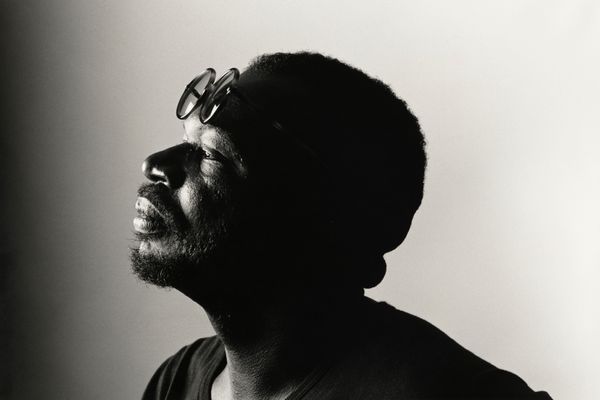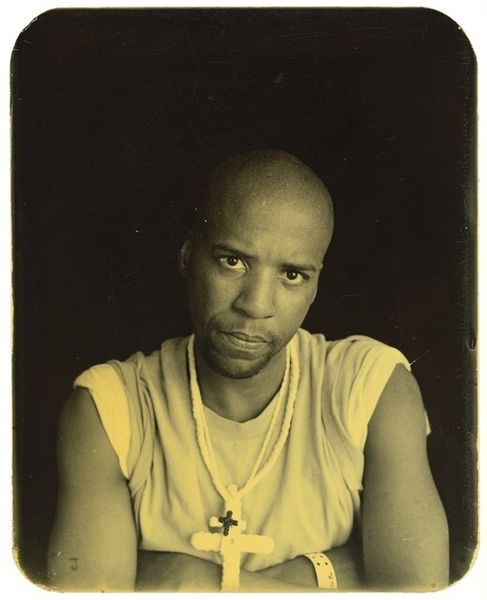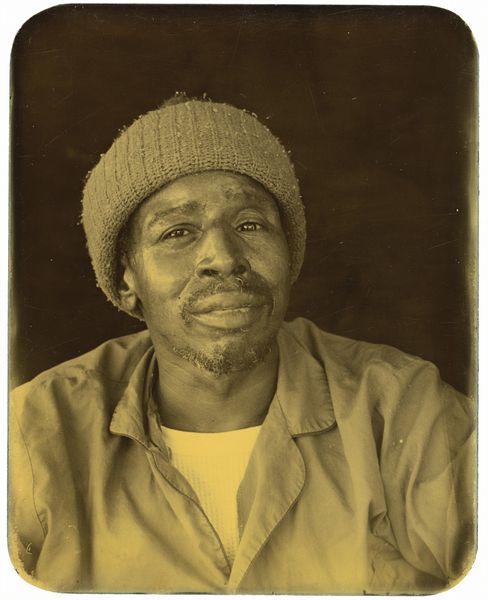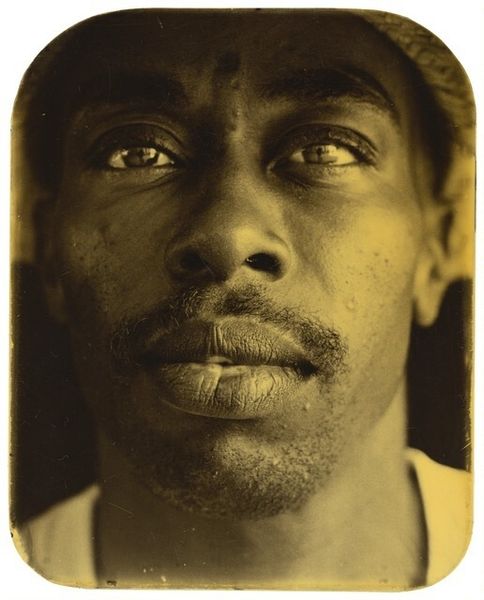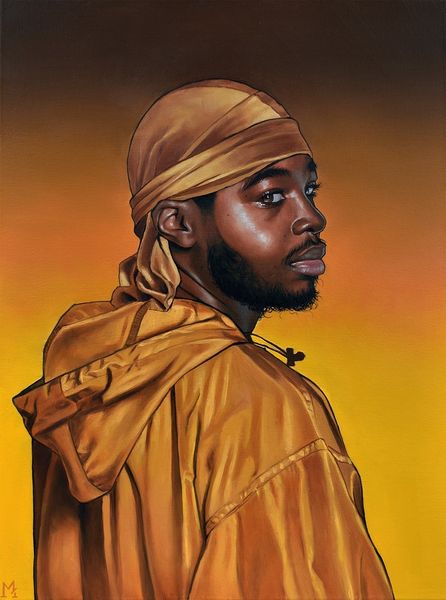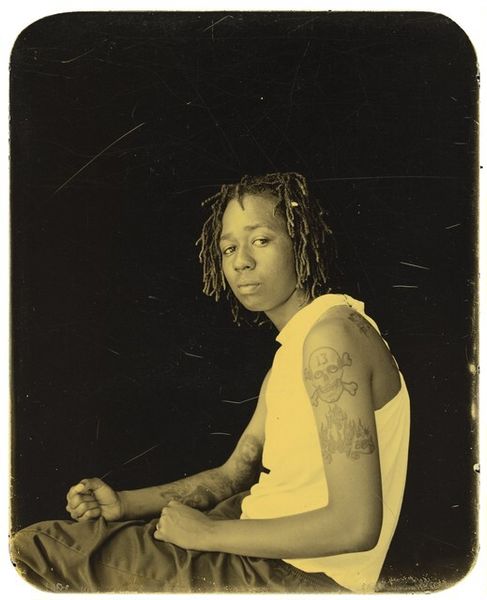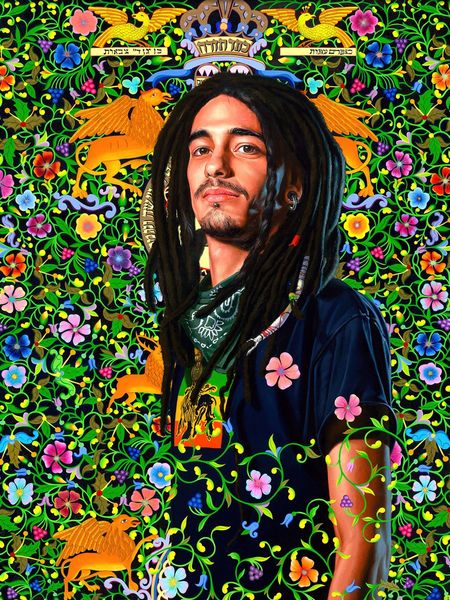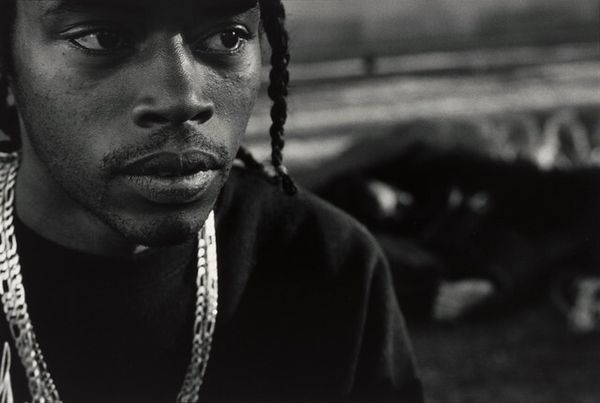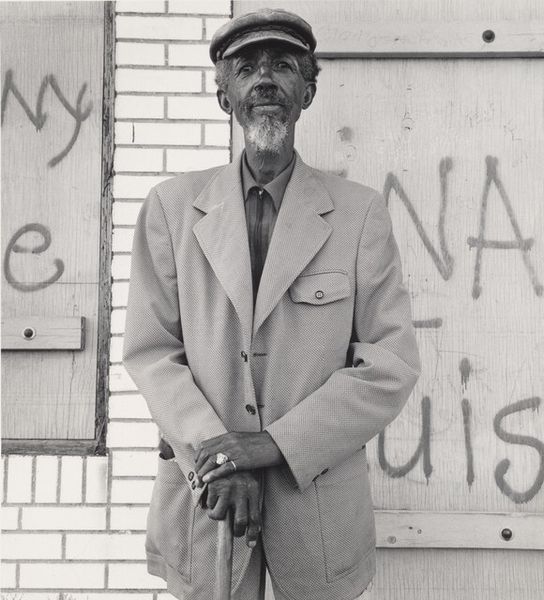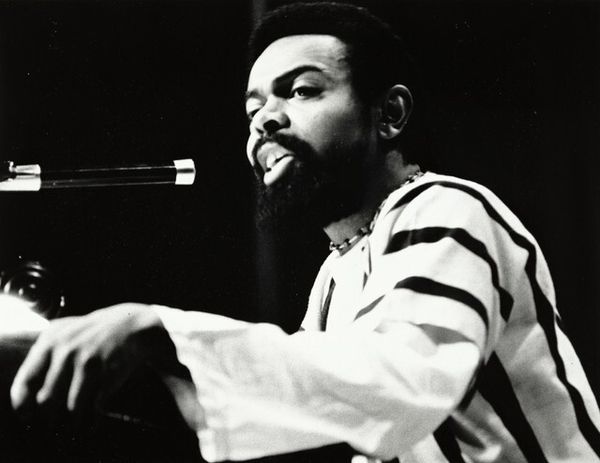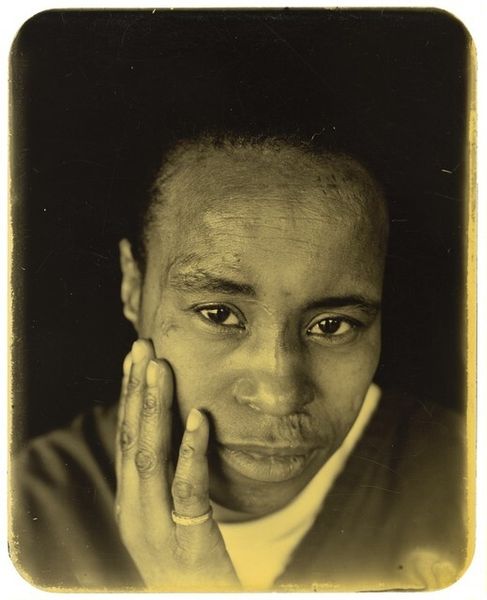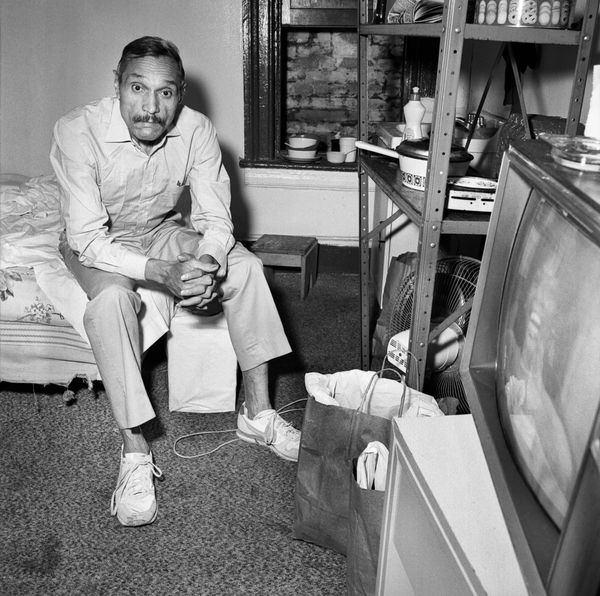
photography, gelatin-silver-print
#
portrait
#
black and white photography
#
photography
#
historical photography
#
gelatin-silver-print
#
monochrome photography
Dimensions: image: 32.1 × 45.7 cm (12 5/8 × 18 in.) sheet: 40.3 × 50.8 cm (15 7/8 × 20 in.)
Copyright: National Gallery of Art: CC0 1.0
Curator: Nancy Andrews' portrait, "Elias Farajajé-Jones," was captured in 1993 using gelatin silver print, a photographic process prized for its rich tonal range. What's your initial impression? Editor: It feels so direct. I'm immediately struck by his eyes – the calm confidence is disarming. And there's a powerful intimacy achieved through such stark monochrome; it feels both timeless and intensely present. Curator: The use of black and white photography can suggest a harking back to tradition and the timeless quality you observed. Think of Yousuf Karsh, for instance. It abstracts reality just enough to ask broader questions, wouldn't you say? Consider also that dreadlocks themselves can function as a powerful symbol of cultural or spiritual identity... Editor: Absolutely, it speaks to a kind of defiance too, in that context. There's an intentional disruption happening. The dreadlocks carry so much symbolic weight – resistance, spirituality, naturalness… And placed within what looks like a classroom setting. It subtly shakes the expected narratives of those spaces. The composition really works; all those chair backs feel like a quiet chorus behind him. Curator: It’s certainly a multi-layered composition. Notice, too, how Andrews captures Elias centrally but surrounded by empty chairs, implying the space as perhaps representative of collective history. As a portrait, it asks viewers to look beyond the surface, delving into questions of identity, representation, and historical narratives in cultural portraiture. The bracelet and other adornments subtly re-inforce individuality. Editor: It does invite us to project, doesn’t it? But then he pulls you back in with that steady gaze. Like, "I am here. See me." I like that tension – it's magnetic. So many portraits get lost in their own self-importance. This one feels like a conversation. Curator: Well said. Perhaps that's what makes it resonate even now. Editor: Definitely, this feels less like an observation and more like an invitation. It feels quite profound when you sit with it for a while.
Comments
No comments
Be the first to comment and join the conversation on the ultimate creative platform.
